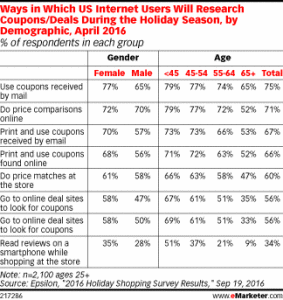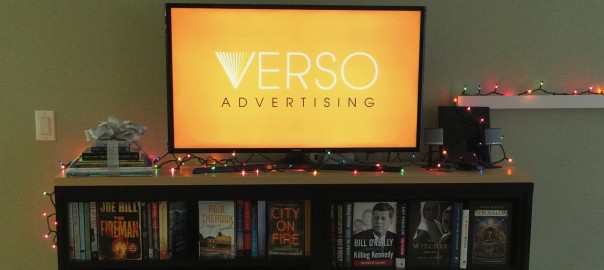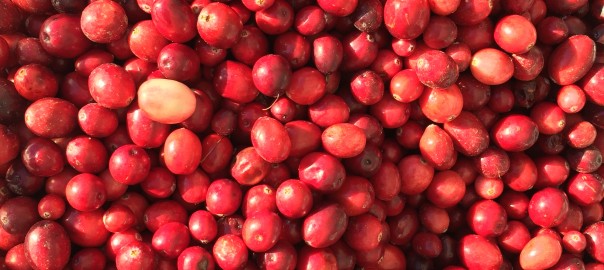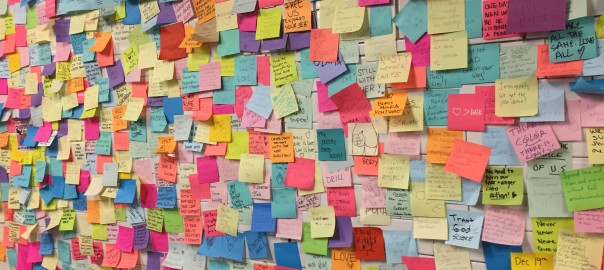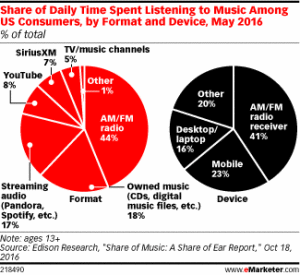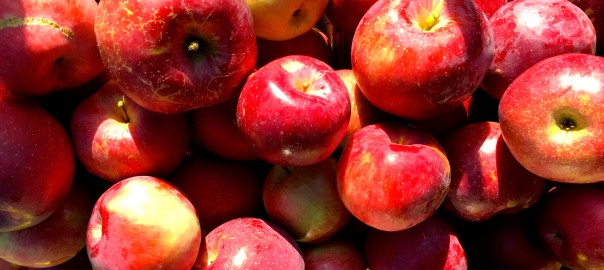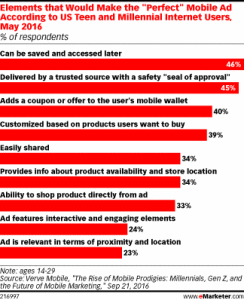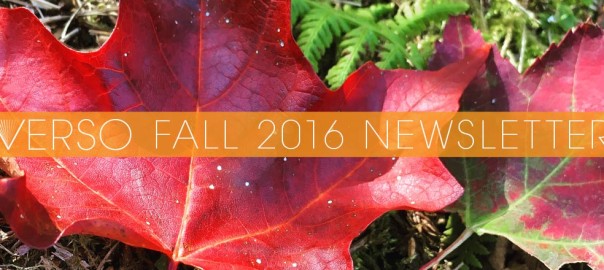SELF SHUTTERS PRINT, GOES DIGITAL ONLY
Conde Nast’s Self is ending the print version of the magazine, and ramping up the digital brand. Media Post reports,
“Since 2014, Self’s single-copy sales dropped from 148,000 to 44,000. Circulation has dropped from just over 1.5 million to just under.
“Meanwhile, video viewership experienced triple digit growth compared to last year, according to Condé Nast. In September, Self.com broke previous traffic records with 5.3 million unique viewers, representing a 56% increase year-over-year.”
#self #print
2017 LOOKS TO BE THE YEAR INSTAGRAM GAINS GROUND OVER TWITTER
eMarketer’s survey of marketers suggests that 2017 will be the year more advertisers choose Instagram over Twitter:
“By 2017, the research firm forecasts, 74.2% of U.S. companies (or at least those with more than 100 employees) will use Instagram for marketing purposes — markedly more than the 66.2% that will be using Twitter.”
#instagram #twitter #social
MARKETERS NEED TO BE ON SNAPCHAT. THAT DOESN’T MEAN IT’S EASY.
The case for using Snapchat to reach 18-24 year olds is clear:
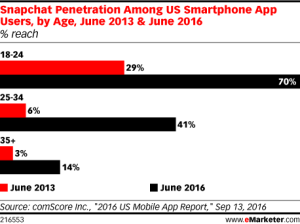
That makes the platform a great place to experiment reaching this age group, but as this tale “from the trenches” of a recent Ben & Jerry’s geo-filter campaign shows, it’s not the place if you’re looking for flawless execution.
#snapchat
SNAPCHAT INNOVATIONS
Digiday reports on the Snapchat campaign run by Birch Box: By using vanity urls, Birch Box was able to sell direct to its highly engaged Snapchat fan base and measure the results. It’s a model of a scrappy direct response campaign on an emerging platform.
#snapchat
NATIVE ADVERTISING TILTS TOWARD SOCIAL
MediaPost reports that advertisers and agency executives are looking to run more native advertising in 2017, with more going toward social (and more of social going to Facebook) than traditional sites such as NYTimes.com and BuzzFeed.
#native
FACEBOOK’S “DEDICATED MEDIA” TAB A HIT WITH MEDIA BUYERS
We’re not sure how consumers will feel about it, but Digiday reports that agencies love it:
“The company has been testing out a dedicated video tab inside its mobile app among a small group of users over the past year, as it aims to make video a more integral part of its mobile offering. The tab appears on its bottom menu alongside the notifications, timeline, marketplace and settings tabs, and opens up into a separate video hub, delivering a feed of live videos and other video content based on a user’s subscriptions or interests.
“For media analysts and media buyers, the dedicated video vertical firmly equips Facebook to grab more ad dollars from TV.”
Matt Heindl, director of social media at Razorfish, doesn’t think TV has anything to worry about in the near future, but Snapchat and YouTube? Yes, they might want to start to worry.
#facebook #video
TOP APPS
In a post on the continued growth of streaming music services such as Pandora and iHeartRadio, eMarketer reports that Pandora is the ninth most popular app of all, and the #1 most popular after various Facebook and Google apps. Here’s a chart that lists the top fifteen most popular apps according to comScore:
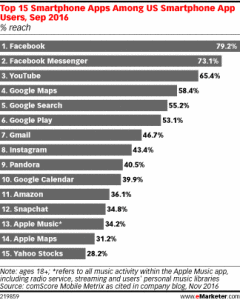
In the continued Pandora or Spotify debate, it’s worth noting Pandora’s dominance in the app category.
#music #pandora #apps


